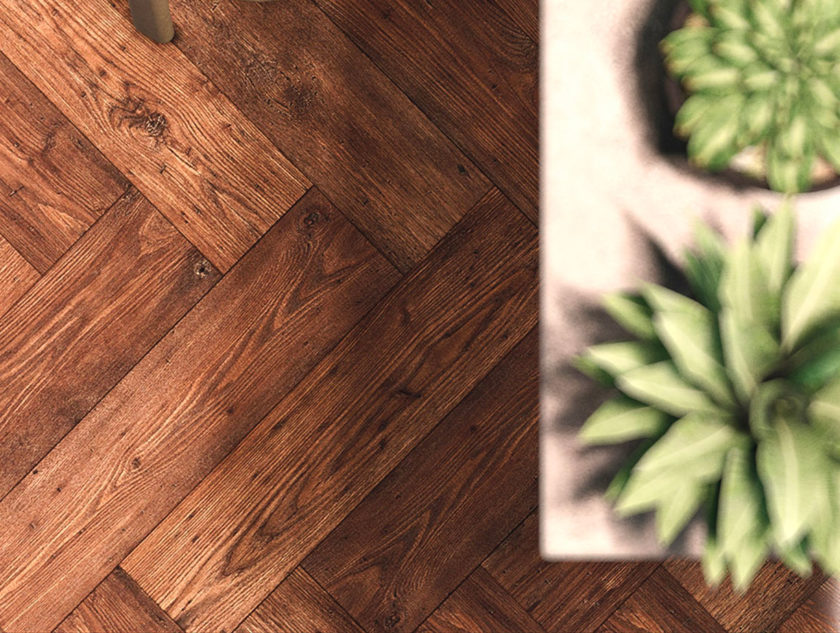The main advantages of Real Time engines vs Offline rendering in Architecture.
It is essential nowdays – for anyone working in architecture and in the AEC industry – to evaluate all the advantages of using a Real time engine like Unity compared to classic Offline rendering engines.
Thinking about visualization in architecture or interior design industry using Unity and more in general through the use of a Real Time engine, it is often associated with Virtual Reality experiences, while at the same time when we talk about still images and cinematic video, we generally think of engines as v-ray or corona rendering.
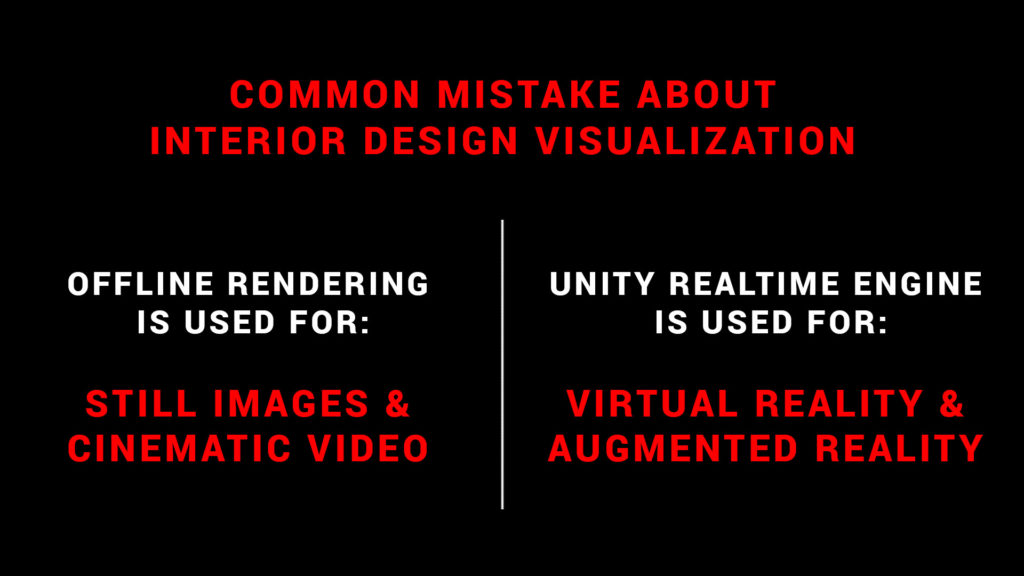
Although this may be a practice in the architectural visualization industry as well as in architectural and interior design studios, this does not mean that it is always the best approach.
Take as example these two images:
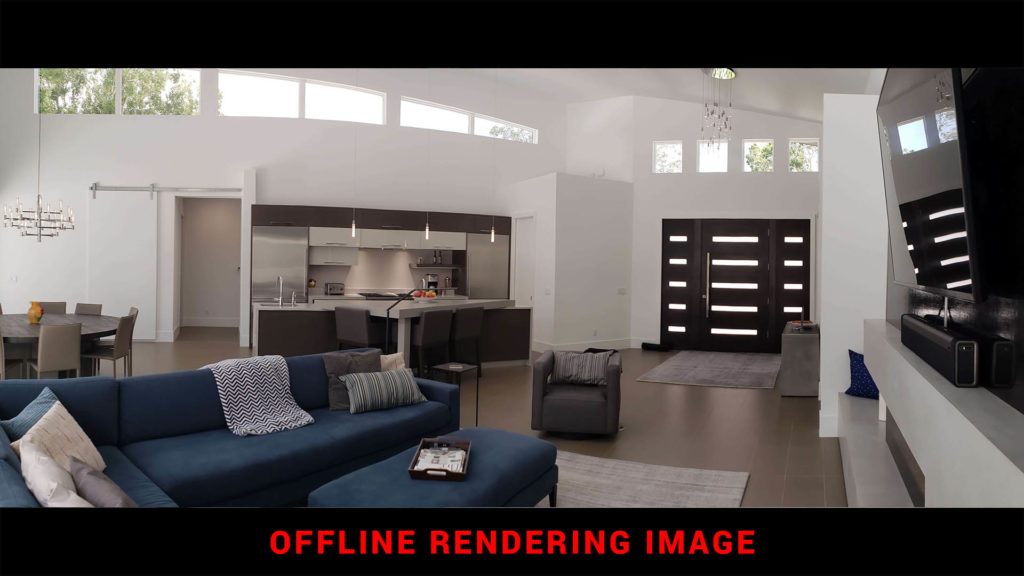
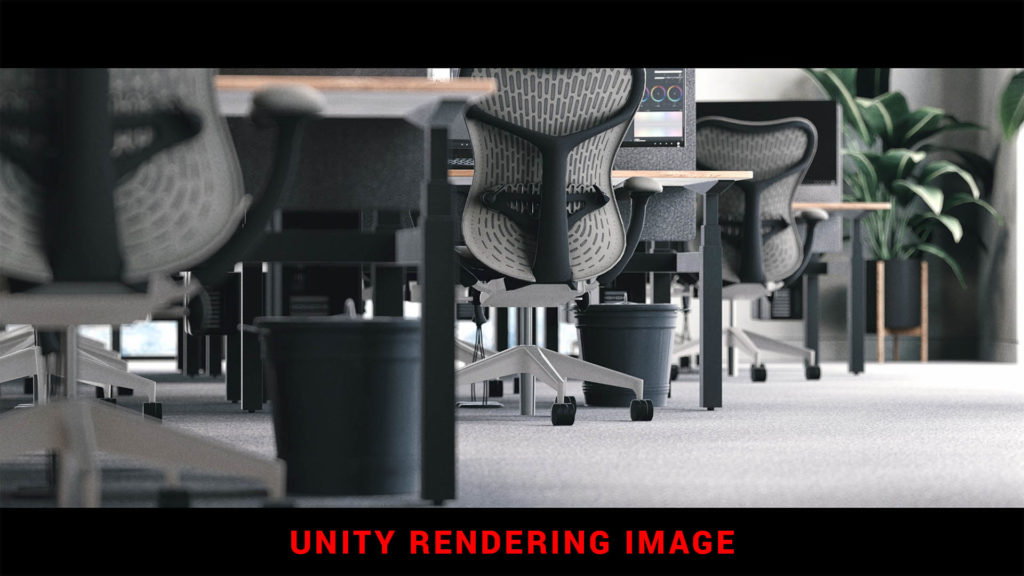
What are the advantages of Unity compared to an Offline rendering engine?
The first one is the rendering time. Taking as example the Offline rendering engine image, it can take up to 8 hours to be rendered on a single PC. It is clear that being Unity a Real time engine, the image rendering is incredible fast.
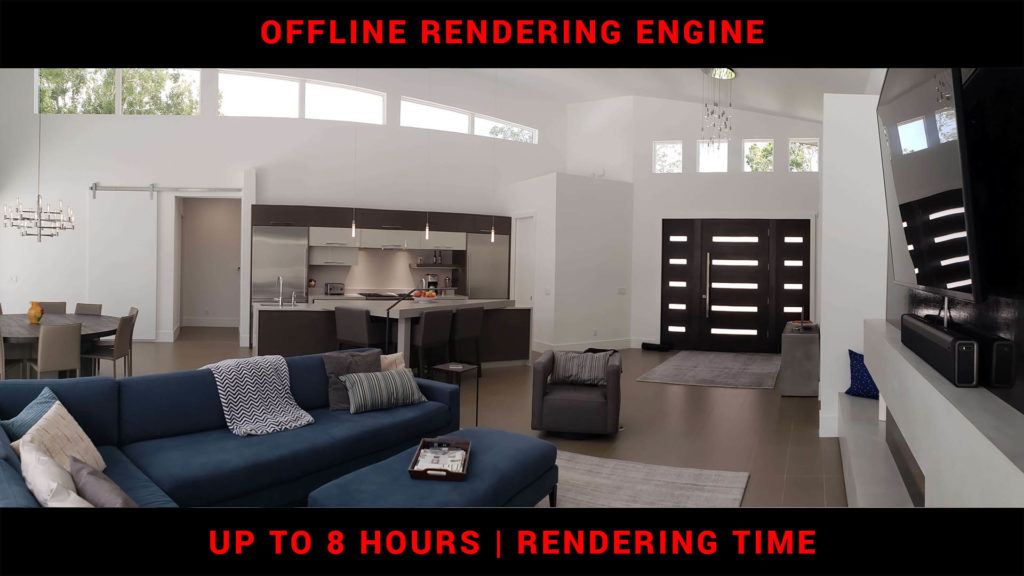
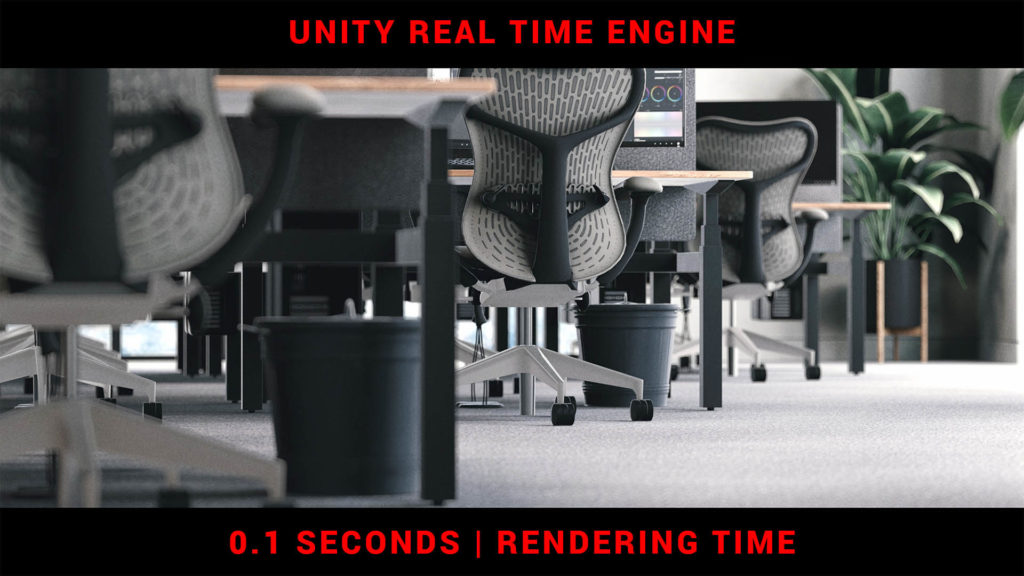
If a couple of hours or even a day for a single image could not be a big issue, try to consider the timing required to rendering a photorealistic 3 minutes video in Full HD.
Considering at least 30 frame per second, it means that a 3 minutes video is composed by 5400 images. Now takes as reference just 10 minutes for image we are going to have around 37 days to finish the video rendering on a single PC.
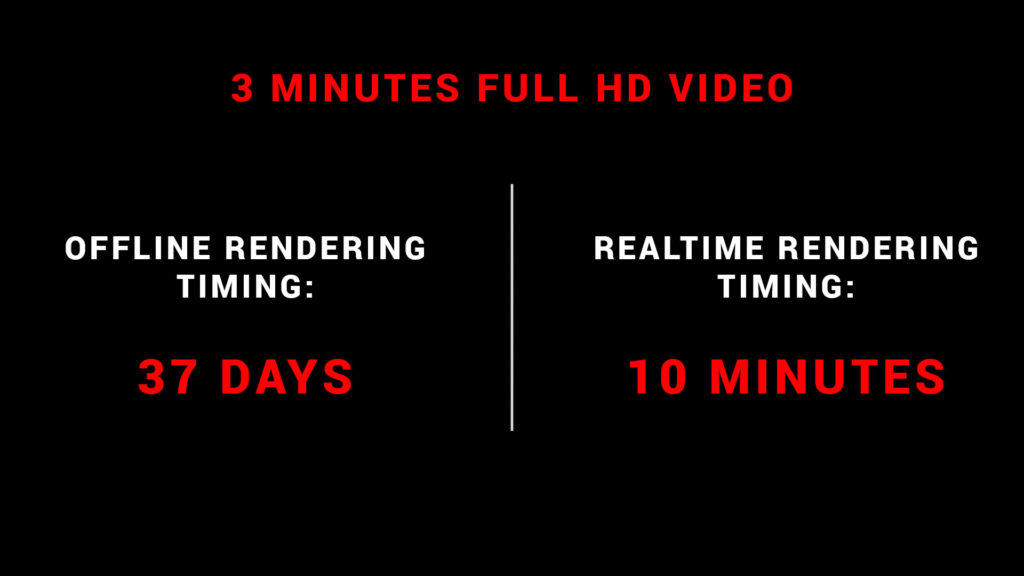
Though it may seem obvious as aspect, it is important to keep it in mind that a Real time approach could take huge advantages -higher resolution – lower rendering time – also for contents more “classic” like still images and video that remain a standard nowadays.
That is why many architectural studios, or even rendering companies, avoid the creation of high-resolution photorealistic videos. However, it is not just a matter of time but also of money.
Considering that nobody can spend a month to rendering a video, it means to have the necessity to use a render farm or a similar hardware configuration that, although it reduces calculation time, increases in a huge way the costs.
While a classic approach to architectural visualization through the use of Offline renderings such as V-Ray, Corona or Octane, requires payment for every single content the client needs, our approach allows instead, through the use of Unity, video in Ultra HD or even 5K (5120 * 2880) incredibly smooth being rendered at 60 images per second. Moreover, even the costs of still rendering is practically zero.
What happens if something needs to be changed? In Real time modify materials, moving or changing furniture is incredibly fast and it is possible to get new images and video quickly and without the necessity to spend thousands of euros to rendering the contents modified in a render farm.
Concluded the topic related to the rendering speed of a Real time engine like Unity for the realization of photorealistic contents, let’s move on another important advantages to use a Real time engine compared to an Offline rendering engine.
Nowadays, creating content that increases the engagement of the potential customer is fundamental. Of course, a sort of interactivity is possible also using Offline rendering engines like the creation of a 360 Pano tour but the disadvantages are several, for example you have to rendering huge images that required hours and because of this, the number of static points where the user will be able to move is limited.
Instead using Unity, it is possible add any kind of interaction and have more engagement between the client and the project. It could be for sure a possible winning card.
Here is possible see a couple of the interaction possible inside the Unity build, like try different floor material, switch though different daylight, turn on/off TVs and light and access to BIM information.


